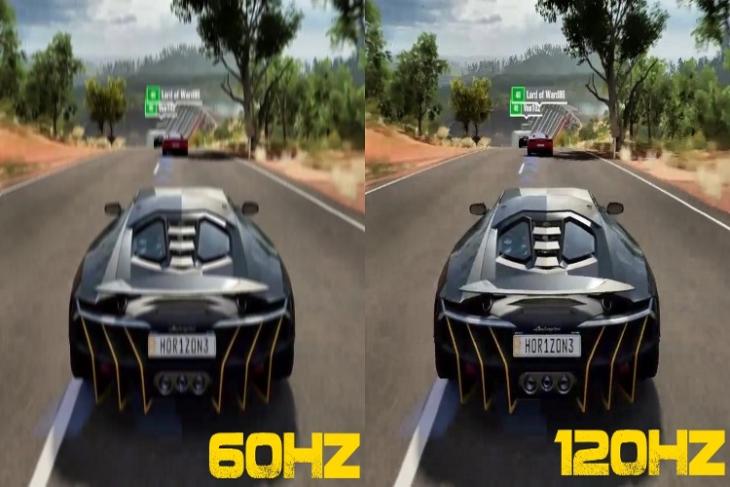120Hz vs 60Hz Displays: What's The Difference?

Recently, with the launch of the iPad Pro and the Razer Phone, 120Hz displays are starting to enter the smartphone market. Afterward already gaining customers in the gaming monitors segment, the technology has finally arrived on the smaller screen sizes. But that does go out some people wondering what exactly is there near the new refresh rate that'due south so highly-seasoned? Also, what's the difference between the conventional 60Hz display and the new 120Hz display.
To brainstorm with, let united states of america kickoff empathise what refresh rate actually means. In elementary terms, information technology refers to the value of how many times does your display refresh in a 2nd. A higher refresh rate causes the screen to refresh information technology's content more dynamically, thus effectively producing a better motion picture quality. This quality is complemented with features such as low motion blur and smoother framerates.

While we are pretty much used to the standard 60Hz refresh rate, the fact is that once your display is going to refresh twice equally fast, you're definitely going to be taken by a storm. A 120Hz display is widely preferred in desktop gaming since it offers better dynamic performance, thus resulting in a improve overall gameplay in fast-paced titles. That being said, in general besides, the 120Hz display feels insanely smooth, while the 60Hz display looks a bit laggy, particularly in one case you compare the 2 screen side by side.
Another large advantage of 120Hz displays is its ability to play 24Hz Blu-ray content. Most of the cinema footage is captured in Blu-ray at 24fps. Since 60 is not a direct multiple of 24, a conventional 60Hz display does pulldown 2-3 frames and eventually suffers from judder. On the other manus, 120 is a direct multiple of 24. Thus, playing 24fps Blu-ray content on a 120Hz display is smooth and stutter-gratuitous.
In theory, all of this sounds pretty good. Sadly though, it all comes down to the source that is being used. While playing a 60fps content, in that location will be literally no divergence betwixt a 60Hz and a 120Hz display. On the other hand, playing a 120fps content is bound to upshot in frame drops on a 60Hz brandish, only would run exceptionally well on the modernistic 120Hz panel.
Thankfully, both the iPad Pro and the Razer Phone come with 120fps content. Razer has gone lengths to ensure Android runs at 120fps and has besides contacted game developers to ensure their games run at the same refresh rate. While the trend of 120Hz is a welcome modify to the current crop of displays, information technology needs to come up aslope 120fps content, otherwise, information technology'south an unnecessary gimmick.
Source: https://beebom.com/120hz-vs-60hz-displays/
Posted by: cannonocas1941.blogspot.com


0 Response to "120Hz vs 60Hz Displays: What's The Difference?"
Post a Comment